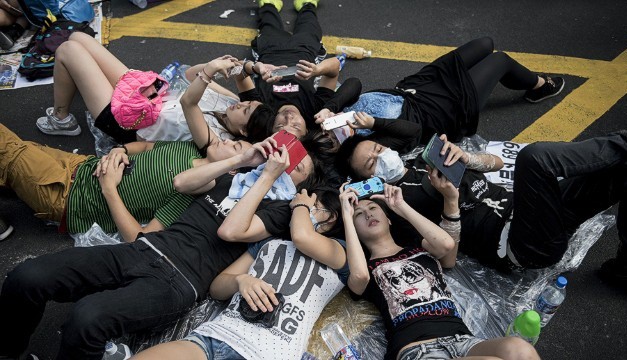The recent modifications to platform X regarding user blocking have raised critical questions about the efficacy of privacy measures in online interactions. With blocked users now able to access public posts from those who have restricted them, many individuals find their sense of security compromised. This shift not only impacts personal users but also presents new challenges for content creators steering their engagement strategies. As the implications of these changes unfold, it becomes essential to contemplate the broader consequences for digital communication and the potential adjustments that may be necessary to safeguard one’s online presence.
Overview of Recent Changes
In a significant shift in social media dynamics, recent updates to the platform X have altered how blocked users interact with content. Previously, blocking an account would prevent any visibility of that account’s posts for the blocked user. However, the recent policy change now permits blocked users to view public posts from accounts that have blocked them, unless those accounts are set to private.
This landmark alteration introduces new complexities in user interactions and raises significant concerns regarding safety and privacy. Although blocked users remain unable to reply to or repost the content of blocked accounts, the ability to view these posts has sparked considerable backlash among users. Many individuals, particularly those in vulnerable situations, fear unwanted interactions and the potential for harassment due to this change.
As a result, content creators are prompted to reassess their sharing strategies and how they manage visibility on the platform. In light of these changes, users are encouraged to review and adjust their privacy settings actively. Exploring options such as muting accounts can provide an additional layer of control over interactions and enhance overall safety in an evolving social media landscape.
User Reactions and Concerns
User reactions to the recent policy change have been overwhelmingly negative, with many expressing deep frustration and anxiety over the implications for their privacy and safety. Critics argue that allowing blocked users to view public posts greatly undermines the safety measures that many rely on, particularly abuse survivors who use blocking as a protective tool.
This policy shift raises serious concerns about the potential for harassment and unwanted interactions, leading to heightened apprehension among users.
Key concerns include:
- Increased risk of stalking for individuals who have previously blocked users for their safety.
- Erosion of trust in the platform’s commitment to user privacy and protection.
- Diminished effectiveness of blocking as a safety feature, which could lead to further victimization.
- Widespread anxiety as users reconsider their posting habits and privacy settings.
The backlash reflects a considerable divide between user expectations for privacy and the platform’s new approach to transparency.
As discussions about these changes trend on various social media platforms, it is clear that many users feel vulnerable and uncertain about their online presence moving forward.
Implications for Privacy
The recent policy change on the social media platform has significant implications for user privacy, particularly for those who previously relied on blocking as a protective measure. By allowing blocked users to view public posts, the platform has altered the dynamics of content sharing, raising serious privacy concerns.
While blocked users remain unable to interact through replies or direct messages, their access to public content can undermine the control that users, especially survivors of abuse and harassment, once felt over who could view their shared information.
This change may lead to increased anxiety surrounding unwanted visibility, prompting individuals to reconsider their willingness to share personal or sensitive content publicly. Survivors, in particular, face heightened risks as they navigate a landscape where their attempts to create boundaries can be easily compromised.
To address these risks, users are encouraged to meticulously review and adjust their privacy settings. By converting accounts to private, individuals can better secure their content and mitigate the potential dangers associated with this policy update.
The shift underscores the necessity for users to remain vigilant in protecting their online presence amidst evolving platform dynamics.
Strategies for Content Creators
Steering through the evolving landscape of social media requires content creators to adopt strategic approaches that prioritize both engagement and safety.
With recent changes allowing blocked users to see posts, it becomes essential for content creators to rethink how they manage their online presence.
To enhance safety while maintaining visibility, consider the following strategies:
- Adjust Privacy Settings: Limit post visibility to trusted followers, providing a more secure sharing environment.
- Engage Through Private Channels: Use direct messages or create private groups for sharing sensitive content, fostering a safer interaction space.
- Utilize Mute Options: This feature allows content creators to maintain visibility without unwanted interactions from blocked users, protecting their online experience.
- Regularly Review Followers: Periodically assess follower lists and remove problematic accounts to control who accesses shared content.
Exploring Privacy Settings
Maneuvering privacy settings has become increasingly important in light of recent changes that allow previously blocked users to view posts. This update has raised significant concerns among users regarding their online privacy and the potential for unwanted engagement.
While blocking accounts remains an option to restrict interaction, it is essential to note that blocked users can still access public posts unless the account is set to private.
To maintain control over who can view your content, users should regularly review their privacy settings. Switching from a public to a private account can effectively prevent blocked users from accessing posts. Additionally, users have the option to mute accounts, which allows them to hide content from specific users without notifying them. This feature can serve as a valuable tool for those who wish to reduce engagement without resorting to blocking.
Ultimately, understanding and utilizing privacy settings is vital for users looking to safeguard their online presence. By actively managing these settings, individuals can create a more secure environment that aligns with their desired level of visibility and interaction.
Alternatives to Blocking
Exploring alternatives to blocking can provide users with effective strategies for managing online interactions while maintaining a sense of control over their digital presence.
Several options exist that empower users to curate their online experience without resorting to blocking, which may not be as effective in light of recent updates.
- Muting accounts allows users to silence notifications and posts from specific individuals without severing connections.
- Customizing privacy settings enables users to control who can view their posts, ensuring a more secure sharing environment.
- Utilizing reporting tools provides a way to address harassment or unwanted behavior, offering protection without needing to block.
- Adjusting account settings to private can prevent previously blocked individuals from accessing any content at all, effectively safeguarding one’s posts.
Engaging with community guidelines is also crucial, as understanding the platform’s rules can enhance user comfort and security.
Future of Social Media Interactions
The recent policy change allowing blocked users to view public posts marks a pivotal shift in social media interactions, compelling users to reevaluate how they engage with the platform. This alteration considerably impacts user privacy and safety, particularly for those who have previously utilized blocking as a protective measure against harassment. With blocked users gaining access to public content, vulnerable individuals may experience heightened anxiety regarding unwanted interactions.
As discussions surrounding this policy evolve, the tension between fostering transparency and ensuring user safety becomes increasingly evident. Content creators must now adapt their sharing strategies, balancing the desire for audience reach with the necessity of maintaining a safe online environment. This necessitates a critical review of privacy settings and exploring alternatives, such as muting or customizing visibility options.
Looking ahead, social media companies will face the challenge of refining their policies to protect users while promoting open communication. Future interactions on these platforms will hinge on the effectiveness of these measures in safeguarding individuals against harassment and privacy violations.
Ultimately, the landscape of social media will continue to transform, requiring users to remain vigilant and proactive in managing their online presence.
Final Thoughts
The recent changes to platform X have ignited a firestorm of concern, as the very fabric of online privacy unravels before users’ eyes. No longer can blocking serve as a bastion of safety; instead, it has transformed into a mere illusion, leaving content creators vulnerable in a digital landscape fraught with peril. In this new era, a reevaluation of privacy strategies becomes paramount, ensuring that engagement does not come at the cost of security in an ever-watchful online world.






